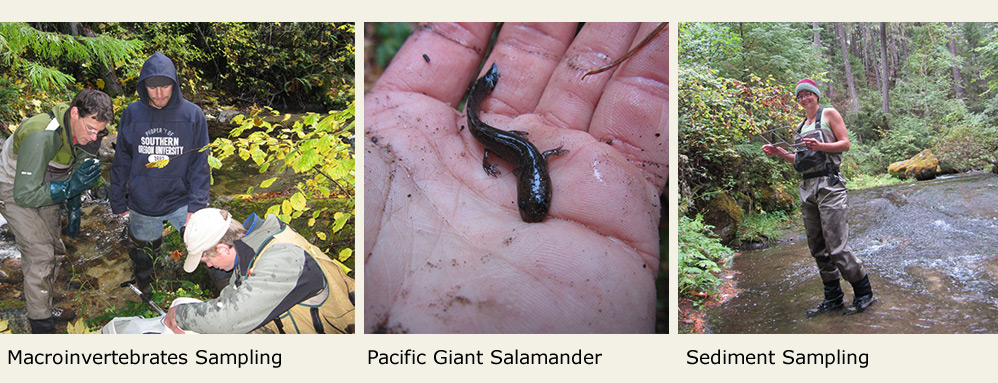
Hydrologic function after low intensity fuel reduction was studied in the Ashland watershed.
- Basal area was reduced by an average of 2%, canopy cover by 5.5% at watershed scale.
- Average annual water yield declined by 25% over the course of the study.
- Changes in precipitation accounted for an average of 69% of the change in flow.
- To increase water yield future treatments need to be more intensive and extensive.
5 permanent transects were established in tributaries to Ashland Creek. These are regularly visited to measure:
- residual pool depths
- substrate embeddedness
- canopy closure
- aquatic macroinvertebrate assemblages
Macroinvertebrate sampling has been largely coordinated by SOU and further sampling has been built into an ongoing SOU entomology class. Started in 2011, this annual data collection at permanent stream monitoring transects helps measure water quality in the watershed. Read the latest update on this work here.
